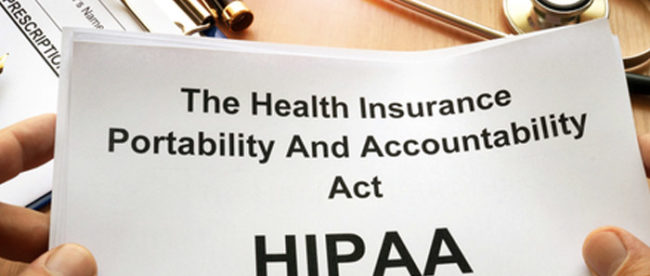All about Pacific Prime
All about Pacific Prime
Blog Article
Pacific Prime - An Overview
Table of ContentsSome Known Incorrect Statements About Pacific Prime 6 Easy Facts About Pacific Prime ExplainedWhat Does Pacific Prime Mean?Pacific Prime Can Be Fun For EveryoneThe Best Guide To Pacific Prime

This is because the data were gathered for a duration of strong economic performance. Of the estimated 42 million individuals who were without insurance, just about about 420,000 (concerning 1 percent) were under 65 years old, the age at which most Americans end up being qualified for Medicare; 32 million were adults between ages 18 and 65, around 19 percent of all grownups in this age; and 10 million were kids under 18 years old, concerning 13.9 percent of all children (Mills, 2000).
These estimates of the number of individuals without insurance are created from the annual March Supplement to the Present Populace Survey (CPS), carried out by the Demographics Bureau. Unless or else kept in mind, nationwide estimates of people without medical insurance and percentages of the population with different kinds of protection are based on the CPS, the most commonly utilized resource of quotes of insurance policy protection and uninsurance prices.
Pacific Prime Things To Know Before You Buy

Still, the CPS is especially useful due to the fact that it generates annual estimates reasonably promptly, reporting the previous year's insurance policy coverage estimates each September, and due to the fact that it is the basis for a constant set of estimates for even more than twenty years, allowing for evaluation of patterns in protection in time. For these reasons, along with the considerable use the CPS in other researches of insurance coverage that exist in this report, we depend on CPS quotes, with limitations kept in mind.

The price quote of the number of without insurance people broadens when a population's insurance policy status is tracked for numerous years. Over a three-year period beginning early in 1993, 72 million individuals, 29 percent of the U.S. https://hearthis.at/freddy-smith-k8/set/pacific-prime/. population, were without protection for at the very least one month. Within a single year (1994 ), 53 million individuals experienced a minimum of a month without coverage (Bennefield, 1998a)
6 out of every ten without insurance adults are themselves used. Although functioning does improve the chance that a person and one's relative will have insurance, it is not an assurance. Even members of family members with two permanent wage earners have virtually a one-in-ten possibility of being without insurance (9.1 percent uninsured price) (Hoffman and Pohl, 2000).
Pacific Prime for Dummies
New immigrants account for a considerable percentage of individuals without medical insurance. One evaluation has actually connected a significant portion of the recent growth in the dimension of the united state without insurance population to immigrants who arrived in the country between 1994 and 1998 (Camarota and Edwards, 2000). Recent immigrants (those that involved the USA within the previous four years) do discover this have a high rate of being uninsured (46 percent), but they and their kids represent simply 6 percent of those without insurance policy nationally (Holahan et al., 2001).
The relationship between medical insurance and access to care is well established, as documented later in this chapter. Although the connection between medical insurance and health and wellness results is neither direct nor simple, a substantial scientific and health and wellness services research study literature links medical insurance protection to better access to care, better quality, and enhanced personal and populace wellness standing.
Degrees of analysis for analyzing the effects of uninsurance. This conversation of health and wellness insurance policy coverage focuses mostly on the U.S. populace under age 65 since practically all Americans 65 and older have Medicare or various other public protection. Furthermore, it concentrates specifically on those with no medical insurance for any type of size of time.
Pacific Prime Things To Know Before You Buy
The issues encountered by the underinsured remain in some areas comparable to those dealt with by the uninsured, although they are typically less severe. international travel insurance. Uninsurance and underinsurance, nevertheless, include definitely different policy concerns, and the approaches for resolving them might differ. Throughout this research and the five records to adhere to, the primary focus gets on individuals with no medical insurance and hence no assistance in spending for healthcare beyond what is readily available via charity and security internet organizations
Medical insurance is an effective factor affecting invoice of treatment because both patients and medical professionals respond to the out-of-pocket rate of solutions - https://www.huntingnet.com/forum/members/pacificpr1me.html. Medical insurance, nonetheless, is neither needed nor adequate to acquire access to clinical solutions. Nevertheless, the independent and direct result of medical insurance coverage on accessibility to wellness services is well established.
Others will get the health and wellness care they require also without medical insurance, by spending for it out of pocket or seeking it from carriers who supply care cost-free or at extremely subsidized prices. For still others, medical insurance alone does not guarantee invoice of care since of various other nonfinancial barriers, such as a lack of healthcare suppliers in their community, restricted accessibility to transportation, illiteracy, or etymological and social differences.
3 Easy Facts About Pacific Prime Described
Official research about uninsured populations in the United States dates to the late 1920s and early 1930s when the Board on the Expense of Medical Treatment generated a collection of records about financing physician office gos to and hospital stays. This concern came to be significant as the varieties of clinically indigent climbed up throughout the Great Clinical depression.
Report this page